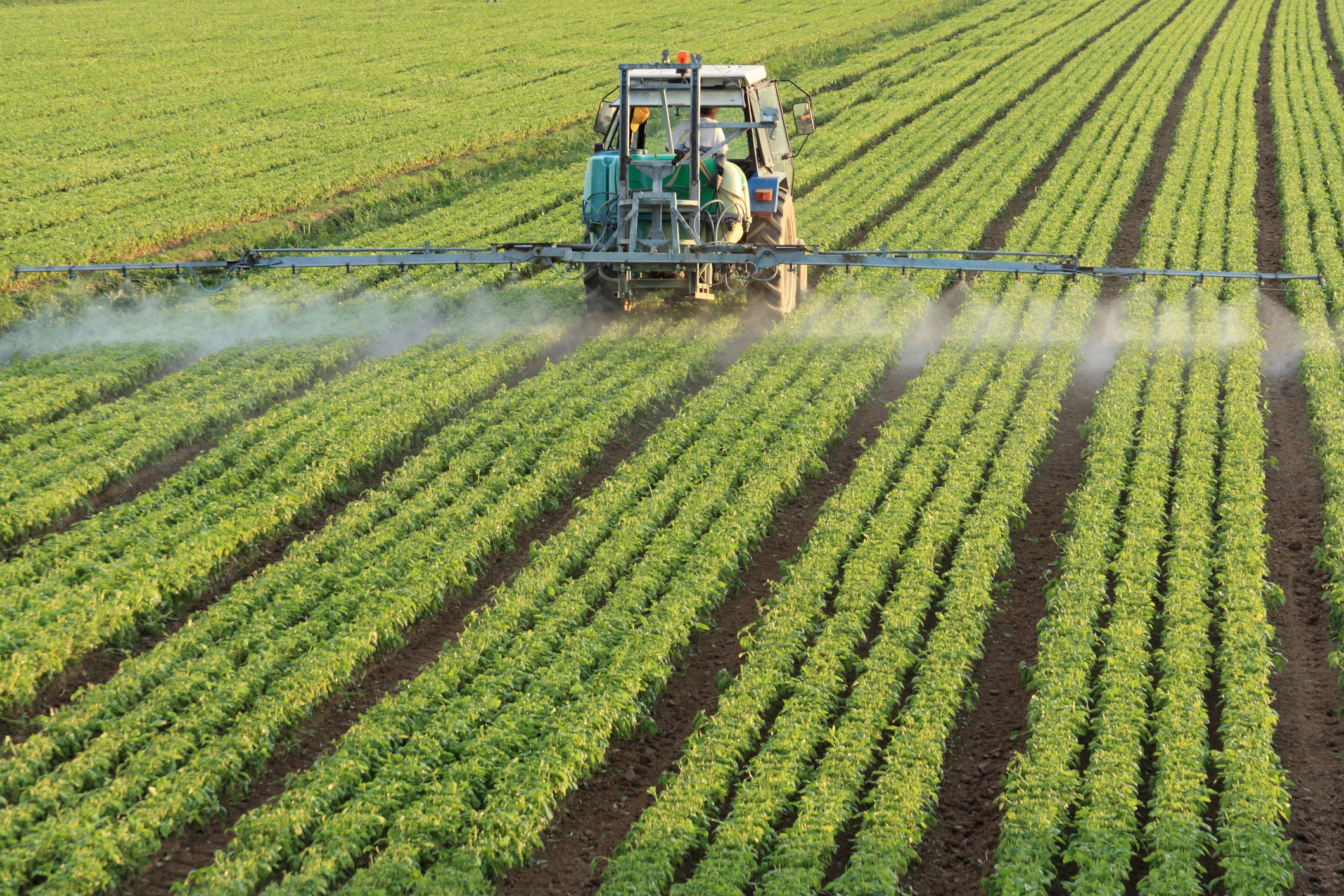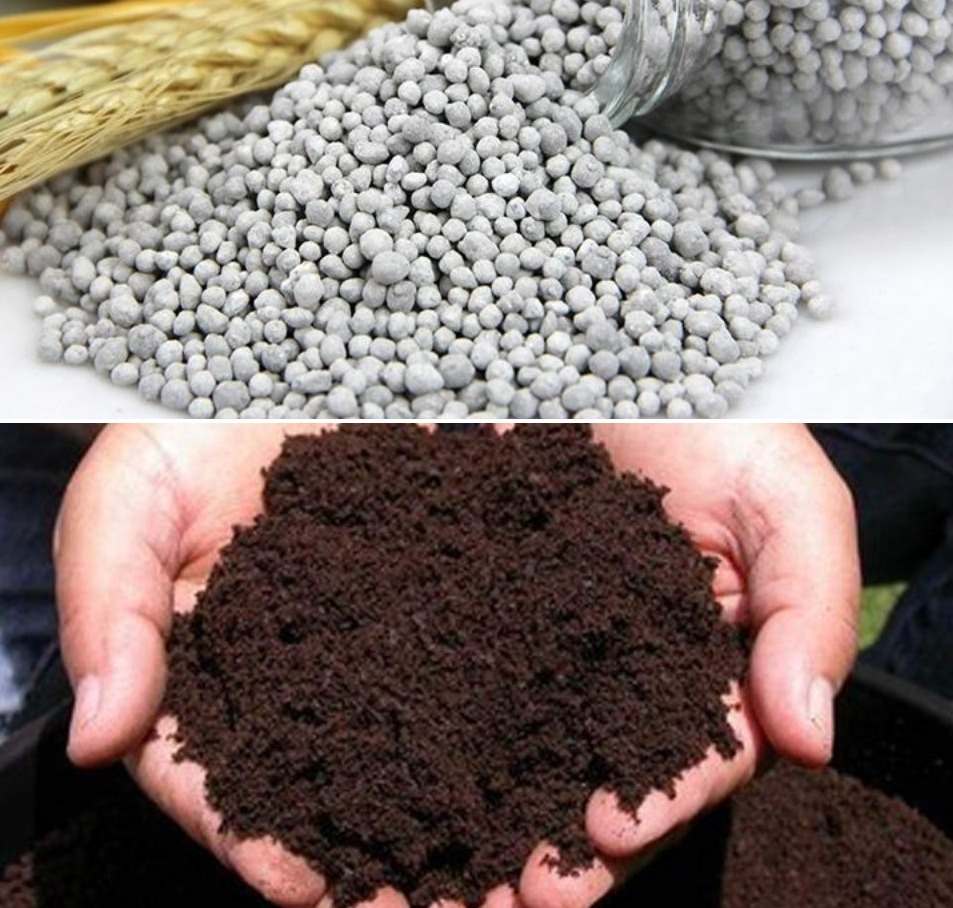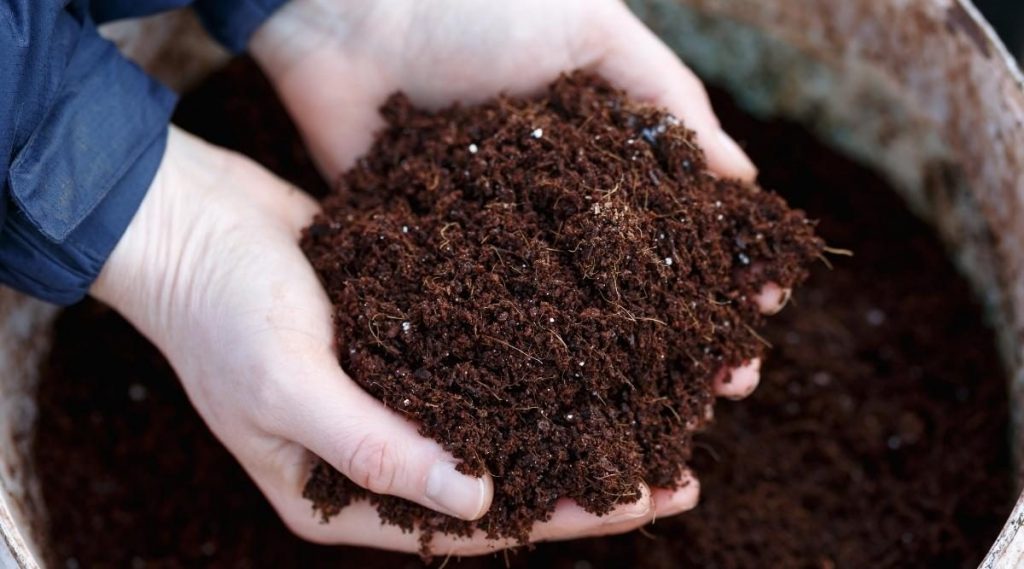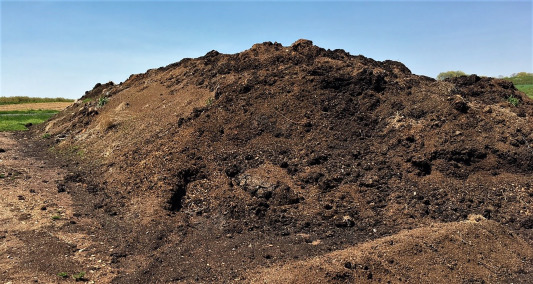
Most fertilizers that are commonly used in agriculture contain the three basic plant nutrients: nitrogen, phosphorus, and potassium. Some fertilizers also contain certain “micronutrients,” such as zinc and other metals, that are necessary for plant growth.
What are fertilizers
Fertilizers are materials or compounds that provide nutrients to the plants for growth and development that are deficient in the soil. The label on the fertilizers indicates three bold numbers, i.e. 10-10-10 or 12-12-12 which means that the first number indicates the amount of nitrogen, the second number is the amount of phosphate and the third number is the amount of potash. The total number on the label represents the primary nutrients present in the fertilizer. This is a national standard for grading fertilizers. 10 means the percentage of nutrients present in the fertilizer.
Different types of fertilizers

Fertilizers are broadly divided into two major categories or types, organic and inorganic fertilizers. Organic fertilizers are cow manure, green manure compost, etc. whereas inorganic compounds are chemical-based fertilizers available in powdered or granular form like the NPK fertilizers.
Natural fertilizers
Natural fertilizers also called organic fertilizers are the one that is derived from animal matter, human excreta, and vegetable matter (compost and crop residue). Some compounds or substances are naturally formed on earth like peat, manure, slurry, guano etc. and are also considered organic. They contain or supply the same nutrients present in chemical compounds, but the composition is different and cannot be altered.
Fertilizer for flowering plants
Flowering plants need fertilizers that are rich in the primary elements: nitrogen, phosphorous and potassium, so as to help the plants develop healthy foliage, and root systems and encourage flower and fruit formation respectively. Though all the elements are required, it should be clearly noticed that the fertilizers for flower plants exclusively have the largest percentage of phosphorous to ensure root formation and healthy flowering.
Foliar fertilizers are a type of liquid nutrients sprayed on the plants such that the leaves of the plants absorb nutrients, but it should be understood that not all plants need it and only some plants with certain nutrient deficiencies absorb the foliar fertilizers quickly.
Fertilizers used by farmers
Farmers use different fertilizers based on the plant they are growing because each plant or crop has a varying level of nutrient requirement and understanding the differences in the needs of plants is very important while fertilizing the crops. The major type of fertilizer used by most farmers is the NPK type chemical-based fertilizer. Other than this, farmers also use organic or natural fertilizers if they are growing organic food or if the plant exclusively needs organic elements.
It is very clearly known that after years of cultivation on the same land or due to adverse weather conditions, the fertility of the soil is lost, i.e. the essential nutrients required by the crops are not supplied adequately by the soil. So under such circumstances to help the plants have healthy growth and productivity, it is important to supplement the soil with deficient nutrients which is why farmers use fertilizers.
Organic fertilizers

Organic fertilizers used for vegetable gardens or farms are compost, compost tea, herbivore manure, fish and seaweed emulsions, and vermicompost. Some other natural organic fertilizers available are alfalfa meal, bat guano, corn gluten meal, chicken manure, green sand, soybean meal, blood meal, bone meal, feather meal and fish meal.
Advantages of the Chemical fertilizers
The granular form of fertilizer is dissolved in water before application and it takes approximately 2 to 5 days to activate and show results in the plants.
Advantages of using fertilizers are:
- They are easy to store and move because they are lightweight.
- They are nutrient-specific and address the deficiency exactly.
- Most of them are water-soluble which makes absorption quick and easy.
- Have a rapid action on plants.
- Increase the productivity of the crops.
- Can be used only when needed at different stages of plant growth.
Disadvantages of the Chemical fertilizers
Some disadvantages of chemical fertilizers when used in excess are:
- Increases nitrate levels in soil and water which leads to eutrophication.
- Prolonged use of fertilizers can imbalance the pH level of the soil.
- Can disturb the conducting and water holding capacity of the soil.
- Do not help in sustaining the soil properties.
Types of inorganic fertilizers
Some basic examples of inorganic fertilizers are compounds containing nitrogen, potassium, and phosphorous such as ammonium nitrate, potassium nitrate, calcium nitrate, urea, potassium sulfate, potassium nitrate, and Muriate of potash, rock phosphate, superphosphate etc. Inorganic fertilizers are available in two forms: single nutrient or multi-nutrient type. The multi-nutrient variety contains basic elements NPK and secondary elements or micronutrients like calcium, magnesium, boron, manganese, etc. There are also other types of inorganic fertilizers called the slow-release formulas, which break down slowly and release the nutrients without causing much damage to the plants.
Fertilizer work
Each element in the fertilizer works for the development and functioning of different parts of the plant. Fertilizers also work to improve the soil condition by helping it retain water and allowing possible airflow to the roots. Nitrogen in the fertilizer helps the plant to produce stems, flowers and fruits; it also keeps the foliage green in colour. Phosphorous in the fertilizer helps produce oil and starch content in the product; it keeps the root system strong. Potassium helps the plant to fight plant diseases and build the protein content in the plant.
Quantity of Fertilizer to be used
It is important to test the soil to know the amount of fertilizer that should be applied to the soil, but if the soil has not been tested the general recommendation of fertilizer use should be 1 to 1.5 kg of NPK for every 100 sq ft of area. For example, if the area is 30 ft long and the rows are 3 ft apart then the application of fertilizer should be 1 kg for sandy soil and 1.5 kg for clay soil.
Use of Fertilizer
Fertilizers are applied to the soil or plants in four different ways:
Broadcast way: generally used for flower beds, trees and vegetable gardens. The application of fertilizers before planting the crops is called the broadcasting method. If the fertilizers are incorporated into the soil after planting then it is called top dressing.
Starter solution: fertilizers that are soluble in the water are sprayed or sprinkled on young plants at the time of transplanting is called a starter solution.
Side dressing: applying the fertilizer around the plant in a band of 2 inches to the side of the plant with a depth of 2 inches during the growing period is called side dressing.
Deep soil application: fertilizers are applied in bands below the furrows or applied at the top of the soil and harrowed to work the fertilizer into the soil.
Time of Fertilizing
Every kind of plant species has a different time for fertilizing. It has been observed that plants need varying amounts of nutrients at different rates during different stages of growth. Some fertilizers are applied in split doses to avoid salt damage to the crops and improve germination. Two important factors that help us decide the time and frequency of fertilizer application are Cation Exchange Capacity (CEC) and soil texture.
Nitrogen fertilizer should not be applied before it is used up by the plants, so the basic technique of applying nitrogen is in split doses such that it reduces the risk of nitrogen loss and improves efficiency.
Phosphorous fertilizer is very slowly consumed by the plants and it remains on the top of the soil due to which there is a possible risk of loss by runoff and erosion. Phosphorous fertilizer should never be applied just before the rainy season.
Other than these specifications there are a few guidelines for fertilizing flowering plants:
- Annual plants need fertilization of the soil during bed preparation.
- Perennial plants or ornamental plants need fertilizers during the spring.
- Plants need fertilizers during bud formation.
- Fertilizing the plants should be avoided during fall and winter.
Fertilizer which makes plants grow faster
Fertilizers that stimulate faster growth of plants should contain little nitrogen and higher levels of phosphorous and potassium i.e. NPK (3-20-20). This ratio of nutrients helps the growth of roots and leads to stem development.
Fertilizer which makes flowers bloom
The fertilizers available in the market have a predefined quantity of NPK labelled on the pack, which makes it easy for one to understand what to choose for flowering plants. It’s already discussed that flowering needs a higher amount of phosphorous in the soil so choosing a fertilizer marked as 12-12-12 or 26-3-3 would not be appropriate because high nitrogen can burn the plants. So, the recommended fertilizer for flowering or better bloom is 5-30-5. Some bloom fertilizers also contain little iron, manganese and zinc.
Spends on fertilizers
The price spent on fertilizers largely depends on the type of plant or crop being cultivated. Some plants consume fertilizers at a very fast rate and reapplication would be needed. For farmers cultivating crops on a commercial scale, fertilizers are available by cooperatives at reasonable rates and each type of fertilizer has a different rate.
Fertilizer Burn
The burning of leaves, i.e. the leaves turn brown on the edges is a condition in plants when they are over-fertilized. Fertilizers generally contain salts that draw water or moisture from the plants and cause damage. If fertilizers are applied in excess, the symptoms of burning show up immediately. If the fertilizer is a slow-release type, then it takes a couple of weeks to show symptoms of the burn.
It is obvious that the burn could be prevented by certain methods like:
- Fertilizer with only the required quantity of fertilizer.
- A slow-release type of fertilizer should be preferred.
- Fertilizing plants with compost reduces the risk of burn.
Fertilizers contain salt and when salts are applied to soil, they don’t dissolve in water and plants only use the water for survival because the ability of the plant to pass water in and out of the roots should be lower than that of the water holding capacity of the soil. To adjust to the salinity plants must absorb and accumulate salts inside the plant so that the quantity of salt present inside the plant is higher and the water intake is normal again. This process slows down the growth of plants. Salts also block the enzyme systems and biochemical pathways of the plant. Salts injure the roots of the plant and interfere with the water intake process causing wilt.
Too much fertilizer use causes stress in the plants and weakens them, which ultimately makes the plants susceptible to diseases and insect attacks. Much severe problem due to over-fertilization is iron chlorosis.
Symptoms of over-fertilizing
The symptoms of too much fertilizer application can be found as below:
- Yellowing of leaves
- Wilting
- Brown colouration of leaf margins and tips
- Rotting of roots
- Leaf drop
- Very slow plant growth
- The hard crust of fertilizer on the surface of the soil
- Death of seedlings
Difference between Fertilizer and Manure
The major differences between fertilizer and manure are:
- Fertilizers are man-made and are prepared in factories whereas manure is a combination of inorganic and organic substances.
- Fertilizers can provide the exact amount of nutrients to the plants, but manure has a mixture of all nutrients because they contain organic elements which occur naturally in nature.
- Fertilizers have high nutrient concentration and manure has a low concentration of nutrients.
- Humus is provided by manure and not by fertilizers.
The function of DAP and Urea Fertilizer
Diammonium phosphate (DAP) is found in granulated form. The size of the granules is 5.5 mm and they are white, grey or black in colour. It contains 18% nitrogen in the form of ammonia and 46% phosphorous in the form of ammonium phosphate. It is commonly used for field crops and vegetables.
Urea is considered the king of fertilizers and the two main reasons for this is it contains 46% of nitrogen and it is a crystalline organic compound. The main ability of urea fertilizer is to promote green leaf growth because it helps in the process of photosynthesis. Advantages of urea are:
- Good nitrogen content
- Relatively low cost
- Non-explosive in nature
- Has wide application
Fertilizers are used for fruit trees
Fruit trees need organic fertilizer rich in nitrogen content. So, fruit plants or trees are generally supplied with blood meal, soybean meal, composted chicken manure, feather meal, cottonseed meal and other organic nitrogen sources for better yield. Some trace minerals are also required.
Symptoms of Deficiency in plants
Phosphorous Deficiency– When the plants are young, phosphorous deficiency has the same symptoms as nitrogen deficiency. Some uncommon symptoms of the deficiency are:
- Stunted growth
- Abnormal dark green colour
- Yellowing in plants
- Unthrifty plants
Potassium deficiency– The biggest clue about potassium deficiency in plants is that it first appears on the older leaves. Typical symptoms of the deficiency in plants are:
- Brown scorching
- Curling of leaf tips
- Chlorosis in leaf veins
- Purple spots under the leaf
- Reduced root, seed and fruit development
Zinc deficiency- The deficiency of zinc in plants is known by reduced plant height, interveinal chlorosis, brown spots on the upper leaves and distorted leaves. Soil that can cause zinc deficiency is high in pH, high in phosphorous, has a low soil temperature, waterlogged conditions, etc. The common zinc fertilizers used for the plants are zinc chelates (14%), zinc sulphate (25-36%) and zinc oxide (70-80%).
Manure preparation
Farmyard manure is the commonly used manure in agriculture and is basically prepared from cow dung, cow urine, waste straw and other dairy waste materials. The cow dung is obtained from the cowshed; put in a pit and is allowed to decompose for a certain period of time. This compost is used as manure to enrich the soil. Manure or compost contains nitrogen, phosphorous, potassium, calcium, sulphur, zinc, copper, manganese and iron.
Advantages of organic manures over conventional chemical fertilizers
The benefits of using organic manures over chemical fertilizers are:
- Manure is slower and gentler on plants and does not get washed away by water or heavy rain.
- Manure improves the soil condition by retaining nutrients and moisture.
- Causeless or no damage to the plants due to the slow release of nutrients into the soil.
- Do not pollute the water resources.
- Chemicals when not used get leached away if fertilizers are added, but manure keeps protecting the soil.
It is estimated that 100 sq ft of an area needs 10 to 315 kg of manure, but it should be composted before use, otherwise, it can injure the plants.
Preparation of compost manure

Some kitchen items which can be used for creating compost manure along with animal manure, fruit and vegetable scraps, eggshells, coffee grounds, loose leaf tea, stale cereal, seaweed, kelp, peanut shells, leaves trimmed or pinched leaves from the garden, finely chopped wood and bark chips, grass clippings, flowers, dead houseplants and autumn leaves.
Some elements or substances that cannot be used for composting are coal ash, coloured paper, diseased plant, aluminium foil, plastics, metals, meat, bones, dairy, pet droppings and synthetic chemicals (herbicides).
Good Fertilizers for farms
For small farms and gardens, granular and liquid forms of fertilizers are used and these can be either water-soluble or slow-release types. Slow-release type fertilizers are considered good for plants because they keep supplying nutrients to the plants for several months. For fast growth and development, liquid fertilizers are considered better.
Bio-fertilizers
Biofertilizer is a medium that contains live micro-organisms like bacteria and fungi that fix the nitrogen in the soil naturally from the atmosphere. They are extremely eco-friendly whereas conventional fertilizers are created using chemicals.
Currently, there are five different types of bio-fertilizers used in agricultural practices such as Rhizobium, azotobacter, azospirillum, phosphate solubilizing bacteria, and mycorrhiza. Among these Rhizobium, azotobacter, azospirillum and blue-green algae are the traditional forms of bio-fertilizers.
Financial and Business expert having 30+ Years of vast experience in running successful businesses and managing finance.





